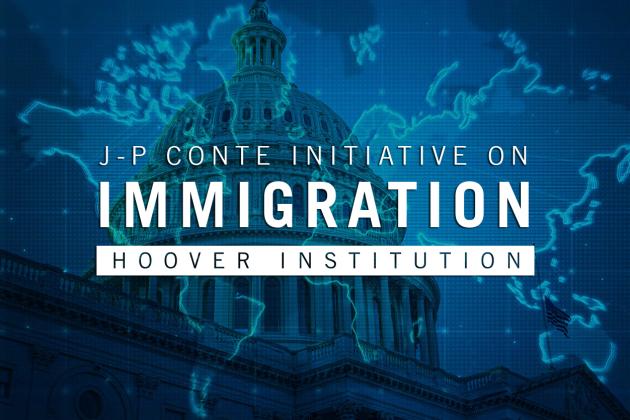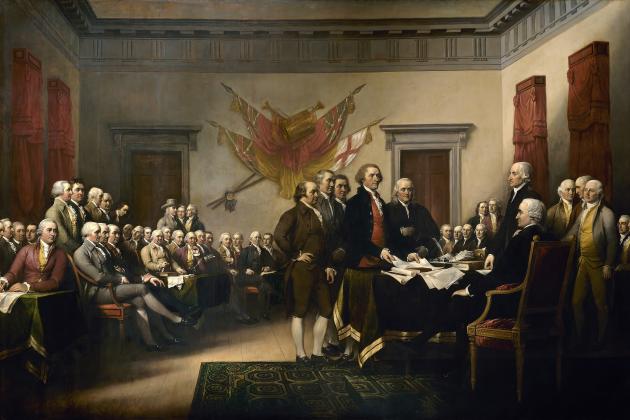PARTICIPANTS
Dan Kessler, David Brady, John Cochrane, John Cogan, John Gunn, Laurie Hodrick, Bob Hodrick, Nick Hope, Pablo Kurlat, Stephen Langlois, Terry Moe, David Mulford, John Raisian, Greg Rosston, George Shultz, Richard Sousa, John Taylor.
ISSUES DISCUSSED
Dan Kessler, Keith and Jan Hurlbut Senior Fellow at the Hoover Institution and Professor at the Graduate School of Business, Stanford University, discussed “Health Reform: Where Do We Go from Here.”
Dan gave a review of the AHCA American Health Care Act that recently died in the Congress, but seemed to be revived a day or two before the talk. What’s in the various forms of this and related bills, what are the likely effects, and the politics of health care reform?
The centerpiece of what’s in the bill is a 1. change in Medicaid financing, 2. changes in individual insurance regulation, and 3. subsidies for individual insurance.
It’s notable that so much effort is going to things that affect such a small portion of the population – not us, i.e. people with employer provided insurance, and not those on Medicare or Medicaid pre Obamacare.
Overall, Dan said the bill provides less spending, and better incentives
One of the big claims is that there will be more uninsured, which Dan rebutted rather strongly.
The changes in individual markets vary by state. Some are good, others not so good.
1. Medicaid. It expanded dramatically under Obamacare. Under Obamacare, the Federal government paid almost all premiums for the expansion population. It removed categorical restrictions – previously Medicaid was restricted, and for example working age men could not qualify simply from having low incomes. Now anyone could join based on income. The AHCA will scale Medicaid back to about what it was.
States structure their Medicaid programs and determine spending levels. The Federal government than matches depending on state income. The match is 50% in California and 80% in Louisiana. This structure obviously gives states an incentive to spend more. All forms of the AHCA change this structure to a block grant; the Federal government gives (initially) only so much money, and states have to make up 100% of the extra they wish to spend. The bills roughly restore the status quo on eligibility.
2. Regulation of individual insurance. Obamacare is community rated – everyone pays the same price, with only a small premium for age -- guaranteed issue – insurance companies must take all comers at that price. It specifies maximum out of pockets, and a long list of essential benefits, which policies must cover.
All forms of the replacement change this to some extent. Some offer guaranteed renewable coverage. You enter with a community rating. But then you only get to keep the community rating if you keep continuous coverage.
That leads to an obvious incentive to buy cheap coverage when healthy and then upgrade when sick. But Dan said insurance companies do not think this is a big issue, and sensible restrictions on when you can buy up solve it.
The continuous coverage provision gets rid of people jumping in and out at will. Insurers did see that as a big problem.
Shultz brought up supply of people and businesses to lower health costs. Cochrane brought up how immigration could bring us cheaper doctors and nurses (and medical claims specialists, of which we have 2.7 for every doctor). A long discussion followed over the source of health cost increases, with Kessler offering the view that new technology was the primary problem, and many others thinking that the seemingly obvious inefficiency of the health market surely must be a major part.
3. Subsidies Currently Obamacare is a defined benefit program. It costs what it costs. You pay up to a percentage of income, and the government picks up the difference. Dan called this a ‘recipe for cost inflation.’ All proposals move the government subsidies to a defined contribution model — The government kicks in x dollars, there is much lighter regulation of insurance, and people top it up if they want more or better insurance.
The proposals get rid of age restriction on premiums. Now it’s 3:1. Healthy young people cost much less than 1/3 of what old people cost, so Obamacare is a big transfer from young healthy to older less healthy people. No wonder the young resist signing up. The reform plans move it to 5:1. However, older people get bigger subsidies to help them pay the higher premium. It is much better to let premiums be economically realistic and subsidized than to force cross-subsidies on markets by distorting prices.
Individual insurance markets are cratering. There were 50- 150% premium increases last year alone, with many insurers dropping out.
Now, the uninsured, and the coverage controversy. The CBO scored the AHCA as reducing the deficit, primarily by rolling back Medicaid. It also said the AHCA would increase the uninsured by 24 million. Kessler stressed this is an impossible and misleading number. That’s more than all the people who supposedly gained insurance under Obamacare!
Where did the extra covered under Obamacare come from? 10 million were newly eligible for Medicaid. 2-4 million were already eligible for Medicaid but signed up, something called the “woodwork effect.” 3-5 million were previously uninsured. They are almost all getting subsidies. There are essentially no people newly insured under Obamacare who are not getting subsidies. 2.5 million are under 26 adults getting coverage under parents’ insurance.
So 20 million got insurance under ACA. This number is likely overestimated, but let’s go with it for discussion.
So how did the CBO get 24 million will lose coverage under AHCA? Well, they have a Model. The Model puts great weight on the mandate. So, it assumes that without the mandate 10 million people will drop their insurance. Jonathan Gruber himself shows mandate had little effect, so this is a ridiculously high number.
5 million of the CBO’s dropouts are Medicaid beneficiaries! They get health insurance for free. And if they show up at a hospital without it, they get enrolled automatically. 5 million people give up free stuff without mandate? Well, maybe, Dan pointed out. If they do, it clearly indicates that they don’t value Medicaid. Likely, they know that if they show up at an emergency room they will get treated, and automatically enrolled in Medicaid. One way or another, they don’t find Medicaid of much value. Moe responded that maybe they’re too dumb to take care of themselves, not that they find it worthless. Cochrane objected that poor people are pretty smart at figuring out government programs that they find useful.
Politics. Dan reported he learned something about the freedom caucus. They come from very safe (for Republicans) very conservative districts. Their main electoral worry is an attack from the right. As such, they are not easily bought off for consensus bills. They also are publicly opposed to earmarks, which makes them harder for leadership to buy off.
Dan summed up that the core pieces of the legislation he regards as important improvements over Obamacare. The tension is between the freedom caucus and the likely liberal republicans needed to pass it in both the house and the senate. 23 house Republicans come from Clinton districts. The deal to offer states more leeway seems to be the direction to a compromise both sides can live with.









